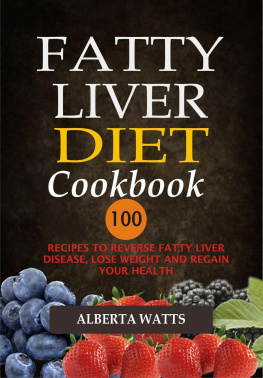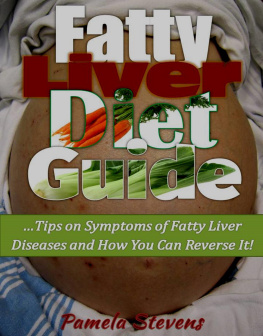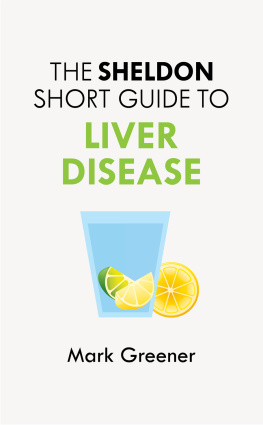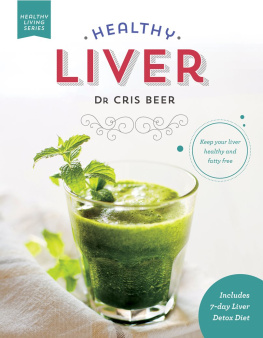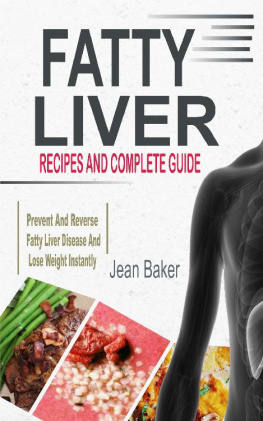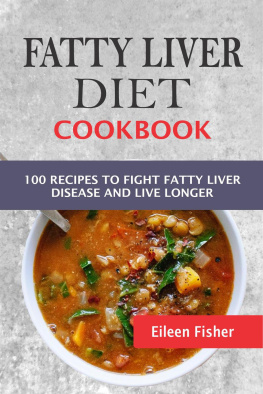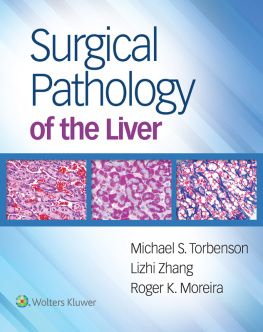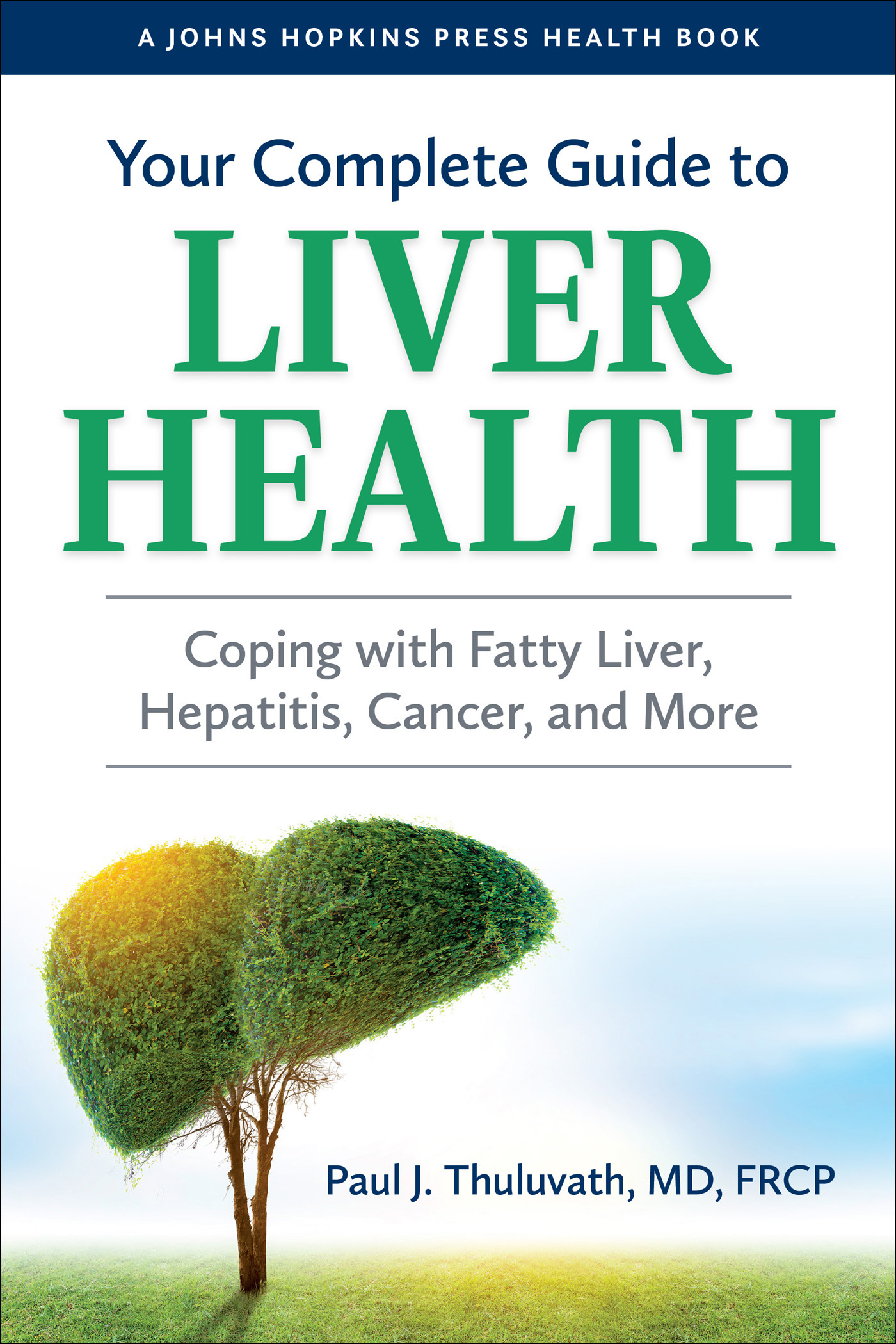Contents
Guide
Your Complete Guide to Liver Health
A Johns Hopkins Press Health Book
Your Complete Guide to
LIVER HEALTH
Coping with Fatty Liver, Hepatitis, Cancer, and More
PAUL J. THULUVATH, MD, FRCP

JOHNS HOPKINS UNIVERSITY PRESS
Baltimore
Note to the Reader: This book is not meant to substitute for medical care, and treatment should not be based solely on its contents. Instead, treatment must be developed in a dialogue between the individual and their physician. Our book has been written to help with that dialogue.
Drug dosage: The author and publisher have made reasonable efforts to determine that the selection of drugs discussed in this text conforms to the practices of the general medical community. The medications described do not necessarily have specific approval by the US Food and Drug Administration for use in the diseases for which they are recommended. In view of ongoing research, changes in governmental regulation, and the constant flow of information relating to drug therapy and drug reactions, the reader is urged to check the package insert of each drug for any change in indications and dosage and for warnings and precautions. This is particularly important when the recommended agent is a new and/or infrequently used drug.
2022 Johns Hopkins University Press
All rights reserved. Published 2022
Printed in the United States of America on acid-free paper
2 4 6 8 9 7 5 3 1
Johns Hopkins University Press
2715 North Charles Street
Baltimore, Maryland 21218-4363
www.press.jhu.edu
Library of Congress Cataloging-in-Publication Data
Names: Thuluvath, Paul J., author.
Title: Your complete guide to liver health : coping with fatty liver, hepatitis, cancer, and more / Paul J. Thuluvath, MD, FRCP.
Description: Baltimore : Johns Hopkins University Press, [2022] | Series: A Johns Hopkins Press health book | Includes bibliographical references and index.
Identifiers: LCCN 2021036195 | ISBN 9781421443812 (hardcover) | ISBN 9781421443829 (paperback) | ISBN 9781421443836 (ebook)
Subjects: LCSH: LiverDiseases. | LiverDiseasesPrevention. | Self-care, Health.
Classification: LCC RC845 .T48 2022 | DDC 616.3/62dc23
LC record available at https://lccn.loc.gov/2021036195
A catalog record for this book is available from the British Library.
are from AdobeStock.
Special discounts are available for bulk purchases of this book. For more information, please contact Special Sales at .
To my mother, Selena, my best teacher; my father, Joseph, my silent supporter; my wife and best friend, Reeja, the inspiration behind my scholarly activities; and my children, Nimisha and Avesh, who followed my path in medicine
Your Complete Guide to Liver Health
CHAPTER 1
Understanding Liver Disease
The liver is one of the bodys hardest-working organs, helping to digest food and get rid of toxins. To understand more about how liver disease affects the liver, its important to learn more about the liver and what it does.
UNDERSTANDING HOW THE LIVER WORKS
The liver, one of the bodys largest organs, is in the upper right side of the belly and has two large sections: the right and left lobes ().
Many important jobs are performed by the liver (), including:
- 1. Making proteins
- 2. Making, storing, and processing fats
- 3. Processing and storing carbohydrates
- 4. Creating and secreting bile to help the intestines absorb fats and fat-soluble vitamins
- 5. Getting rid of potentially harmful chemicals the body produces
- 6. Getting rid of toxins, such as drugs, alcohol, and harmful substances from the environment

FIGURE 1.1. The liver, gallbladder, and pancreas
TABLE 1.1. Important jobs of the liver
Plays a major role in processing carbohydrates, proteins, and fats |
Makes proteins, including: - albumin (helps maintain the volume of blood)
- fibrinogen (needed for blood clotting)
- transferrin (helps the blood carry iron)
- prothrombin (helps the blood clot)
|
Processes many drugs, so the body can use them |
Gets rid of many toxins, including drugs, alcohol, ammonia formed from breaking down proteins, and bilirubin formed from breaking down old red blood cells |
Gets rid of tumor cells, bacteria, yeasts, viruses, and parasites |
Stores many vitamins and minerals |

FIGURE 1.2. The digestive system
LIVER DISEASE, DAMAGE, OR INJURY
Liver disease is any condition that damages the liver and prevents it from doing its jobs properly. There are many different types of liver disease and several causes of that disease. The most common causes include viruses, inherited conditions, non-alcoholic fatty liver disease, or alcohol (). Additionally, cytomegalovirus, or CMV (which can cause serious birth defects), Epstein-Barr virus, or EBV (which causes mono, or infectious mononucleosis), and herpes simplex virus, or HSV, can also trigger an acute (new) liver injury. CMV and EBV infections are common and often asymptomatic (without symptoms), but these viruses may cause more severe injury in individuals who are immunocompromised (have a weakened immune system). Although liver enzyme abnormalities are common in COVID-19, it is not known whether these abnormalities are the direct result of a viral infection.
Any of the above conditions can damage the liver cells, but no matter what the cause, the damage prevents this organ from working normally.
STAGES OF LIVER DAMAGE
The liver is usually able to repair itself when it gets damaged. It can withstand a lot of harm before a person may start to feel any symptoms. In other words, most people who have liver damage do not have any symptoms in the early stages of the disease or its harmful changes.
Fibrosis
In situations where the damage is caught early, the liver can repair itself (regenerate new liver cells) and start working normally again. The healing process may result in the formation of scar tissue (fibrosis).
TABLE 1.2. Causes of liver disease
Condition | Types |
Inherited disorders | hemochromatosis alpha-1 antitrypsin deficiency Wilson disease |
Infections caused by viruses | hepatitis A hepatitis B hepatitis C hepatitis D hepatitis E |
Autoimmune disorders | autoimmune hepatitis primary biliary cholangitis primary sclerosing cholangitis |
Other causes | alcohol non-alcoholic fatty liver disease medications and supplements |


